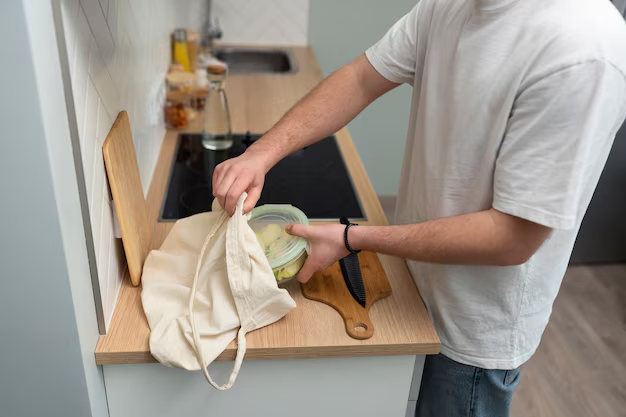Quick and Easy Ways to Defrost Your Refrigerator
Imagine this: It's a busy evening, your refrigerator is packed with groceries, but you suddenly notice it's not cooling as efficiently as it should. The culprit? A thick layer of frost that's been building up silently. Quickly defrosting your refrigerator can restore its efficiency, making your food safer while reducing its energy consumption. This guide will walk you through the fastest methods to defrost your refrigerator, maintaining both your appliance and peace of mind.
Understanding the Need for Defrosting
Refrigerators are indispensable in our daily lives, preserving our food and ingredients fresh. However, over time, frost can accumulate in both older models and specific areas of even frost-free refrigerators. This frost build-up can obstruct the appliance's cooling abilities and increase energy usage, leading to higher electricity bills. Knowing when and how to defrost effectively is crucial for ensuring your refrigerator functions optimally.
Why Does Frost Accumulate?
Frost accumulation occurs primarily because of the moisture in the air that enters the freezer and refrigerator compartments. This moisture comes from opening the door and warm foods placed inside. When the warm, moist air cools down inside the fridge, it turns into frost. This can occur more frequently in humid climates or when the refrigerator door has been left open for extended periods.
Fast Methods to Defrost a Refrigerator
Defrosting a refrigerator might sound like a daunting task, but with the right approach, it can be a quick and seamless process. Here are some effective ways to defrost your refrigerator fast:
1. Turn Off the Power
Before you begin, ensure your refrigerator is unplugged. This prevents any risk of electric shocks. It also stops the fridge from trying to cool while defrosting, making the process faster and more efficient.
2. Remove All the Items
Once the refrigerator is unplugged, take out all the food items. Store perishables in a cooler with ice packs to keep them fresh during the defrosting process. This not only protects your food but also accelerates the defrosting process by allowing more airflow.
3. Use a Hair Dryer 🌀
A hair dryer can be an excellent tool for quick defrosting, concentrating heat on specific frosted areas. Hold the dryer at a distance and keep it moving to avoid overheating any part of the fridge. This method works best for thicker frost layers.
4. Place Bowls of Hot Water
Fill bowls with hot water and place them on the shelves or compartment bottoms. The steam will help melt the frost. For enhanced effect, cover the shelves with towels to capture moisture and keep replacing the water until all frost has melted.
5. Use a Fan
A fan can help circulate warm air around the freezer and refrigerator compartments, speeding up the defrosting process. Position the fan outside the fridge, directing airflow inside, which will prevent water from accumulating as the frost melts.
6. Use a Scraper
A plastic scraper can be used to gently remove larger chunks of frost. Avoid using metal tools as they might damage the interiors of the fridge. This method is particularly effective in combination with other techniques like a hair dryer or hot water bowls.
Best Practices for Defrosting
While defrosting might seem straightforward, adhering to best practices can prevent damage to your refrigerator and ensure a successful process.
Preventing Flooding
As frost melts, it turns into water that needs proper handling to prevent flooding. Use towels and sponges to absorb excess water. Ensure that no water enters electrical components or stays pooled at the bottom, as it might cause rusting.
Be Patient and Gentle
Patience is vital when defrosting. Avoid chipping away at the ice with sharp objects, as this can damage the cooling coils or interiors. Let the heat from your methods do the work naturally.
Regular Maintenance
Regularly cleaning the gaskets, keeping the door closed, and checking the thermostat settings can prevent excessive frost accumulation. Routine defrosting can enhance the fridge's efficiency, saving energy and extending its lifespan.
Strategize Your Food Storage
Organize your food in such a way that frequently used items are easily accessible. This strategy minimizes the time the door is open, reducing the introduction of warm air into the fridge.
Conclusion: Keeping Frost at Bay
Defrosting is an essential maintenance task for your refrigerator. By understanding the causes and adopting the right techniques, you can wind through the process swiftly. Not only will this restore the efficiency of your fridge, but it also ensures the freshness of your food, all while keeping energy consumption low.
Remember, the key is consistency and gentleness. With regular check-ups and using these fast methods, you'll ensure that frost issues become a minor, manageable inconvenience instead of a major hassle.
Stay proactive, and you'll find your refrigerator running smoothly, maintaining your food's freshness and your energy efficiency high. Now, breathe easy and enjoy the cool comfort of a well-functioning appliance!
Quick Tips Recap 🌟
- Turn Off Power: Safety first; unplug your fridge.
- Remove All Items: Protect perishable items in a cooler.
- Use a Hair Dryer or Hot Water Bowls: Concentrate heat for rapid melting.
- Employ Fans: Increase airflow to speed thawing.
- Utilize Plastic Scrapers: Gently remove thicker frost chunks.
- Stay Patient: Avoid rushing to prevent appliance damage.
By incorporating these simple steps, defrosting your refrigerator rapidly and effectively becomes a simple routine. Embrace these insights and enjoy a hassle-free refrigerator maintenance experience.
